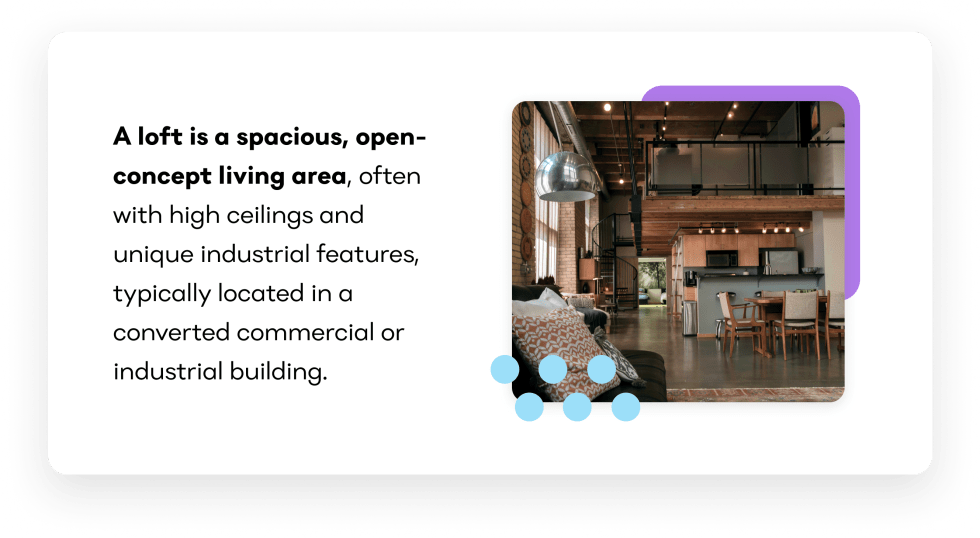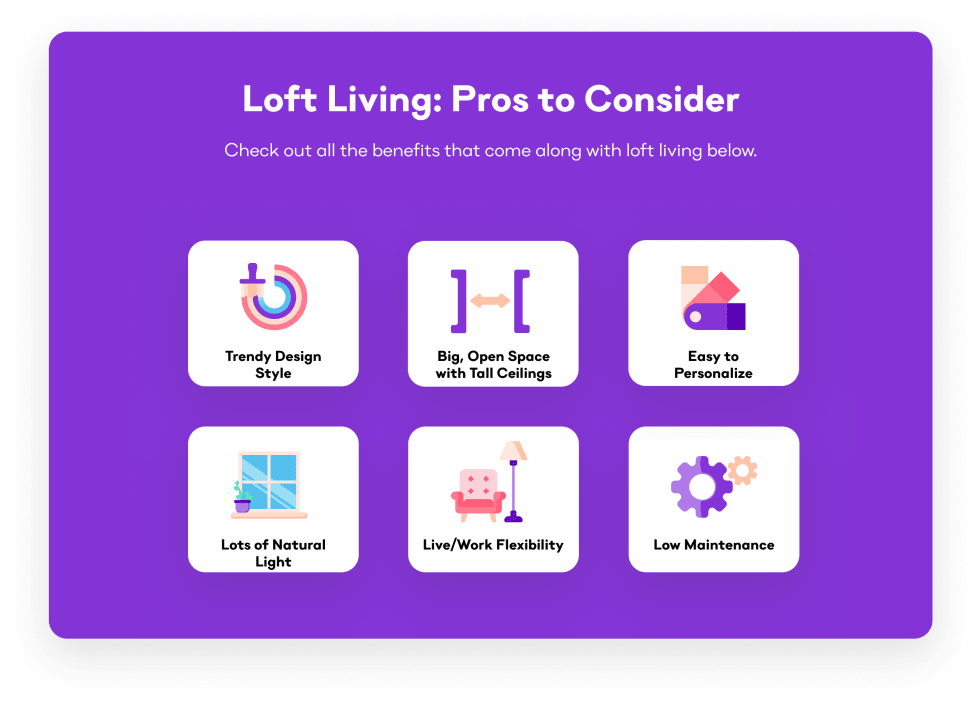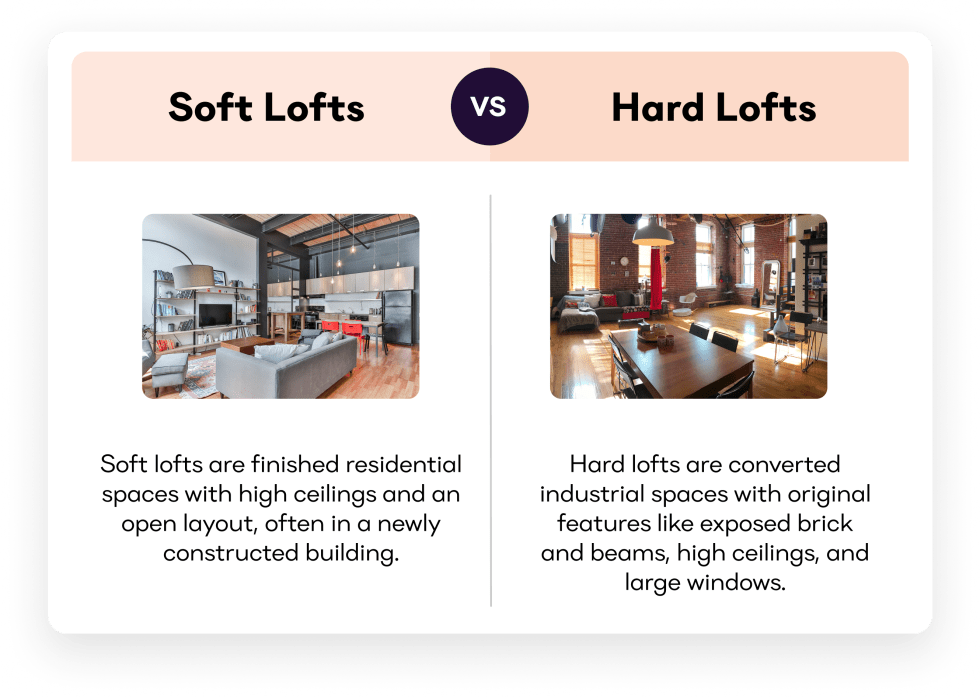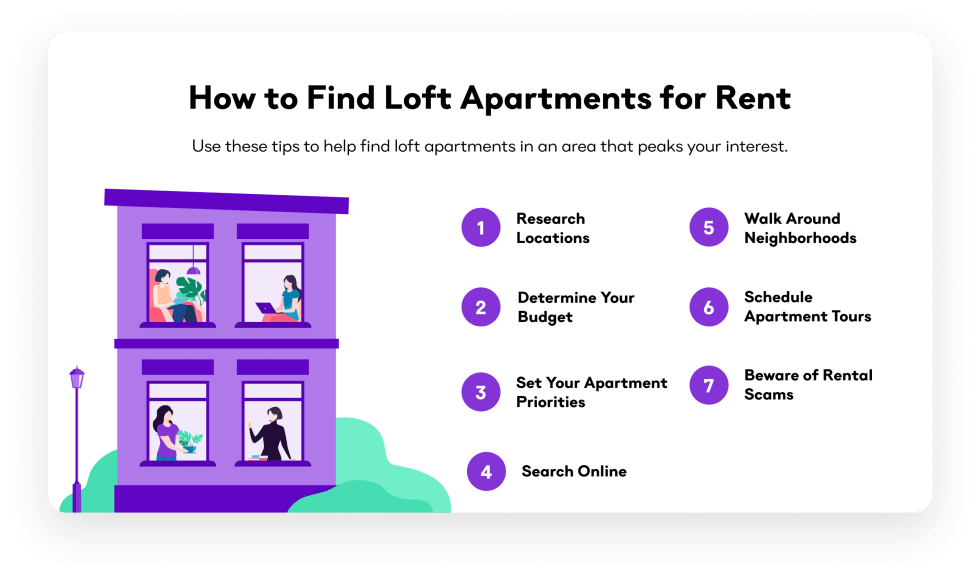South Bank at Quarry Trails
- 93 units available
- Studio • 1 bed • 2 bed • 3 bed
- Amenities
In unit laundry, Patio / balcony, Granite counters, Pet friendly, Stainless steel, Walk in closets + more

Loft apartments have long been associated with artists and creative types, but in recent years, they've become increasingly popular with people from all walks of life. With their soaring ceilings, exposed brickwork, and industrial-inspired features, loft apartments offer a unique and stylish living space.
But before you decide to move into a loft apartment, it's important to weigh the pros and cons. In this article, we'll take a closer look at what loft apartments are all about, and help you decide if one is right for you.
A loft apartment is a large, open space with few or no interior walls, typically converted from a former industrial or commercial building. Lofts are known for their high ceilings, exposed brick and concrete, and large windows. They offer a unique and stylish living space, and they are popular with people who appreciate their spaciousness and versatility.
Loft apartments can be more expensive than traditional apartments, but they offer a number of advantages, such as a spacious open floor plan, a unique industrial aesthetic, and a desirable location.

If you’ve spent any time watching home decor and real estate shows, you’ll know that modern and industrial apartments are hot right now. Now is the time to get in on the trend and create the look you love in your own loft.
Exposed brick and metal beams contribute to the rustic aesthetic of lofts. Add your own industrial features or rely on modern, minimalistic touches to enhance the charm of your loft apartment.
Apartments aren’t usually known for their open-concept floor plans. If you’re tired of cramming everything into a small, urban apartment, you’ll love loft living. Lofts are known for their spacious floor plans that offer plenty of flexibility to decorate and create separate areas for work and play. The high ceilings compound the effect, adding vertical height and visible volume to the space.
If you have kids, loft spaces afford them more room to play. If you don’t, you can grow into the loft, add roommates, or enjoy it all on your own.
Want to see a real-life example of a great loft apartment? Check out this tour from our friend Simone:
Apartments usually have well-defined areas with near-nonexistent flex space. Lofts make it easy to map out the space however you like across its large, open space. Using furniture, rugs, curtains, and partitions, you can design individual living areas with as much privacy as you prefer.

Among the many spaces you might design in your loft apartment may be an at-home office. In a remote-working world, lofts allow for a small workspace, which you can build out with the help of bookcases, planters, and room dividers. If you run a business that houses inventory or greets clients, your loft can also accommodate your needs for space and multi-use functionality.
Industrial lofts that were once warehouses are often ready to welcome the natural light with floor-to-ceiling windows. However, natural light is a desirable feature in any space, and new construction lofts tend to follow the trend. It’s also a great way to save on energy costs on lighting and even heating — even winter sunlight can keep you toasty.
Despite their spaciousness, lofts don’t always offer traditional storage like closets. You might need to supply your own wardrobes, trunks, or chests of drawers to create the storage you need. This might be a pro for those who want to personalize their space with design features, but it’ll also increase the initial expense of living in a loft.
When you live in a loft apartment, communal space for desirable amenities is often nonexistent. It’s usually challenging to build out fitness rooms, club rooms, storage areas, and roof decks in a building where every floor would need to be converted and repurposed.
Although it’s not impossible to find modern amenities in a loft building, they’re usually considerably more expensive than a traditional apartment complex that might be right next door.
Floor-to-ceiling windows may be beautiful, but they also make for exaggeratedly hot summers and drafty winters. The open floor plan makes heating and cooling more expensive, too, because you’ll have to pay to heat or cool the entire loft, whereas traditional apartment living allows residents to target rooms with the highest traffic.
You can brainstorm some improvements to make a loft more energy efficient. Those could include asking about better appliances or triple-paned windows. However, landlords and property managers aren’t eager to make these changes, especially when tenants are the ones paying for utilities.
Older industrial buildings-turned-lofts ooze rustic charm, but that might also mean they come with outdated utilities. Unfortunately, there isn’t much you can do about old pipes and outdated ventilation.
Living in a loft apartment can pose privacy issues. If your loft is close to the street, you might end up feeling like you’re living in a fishbowl. If you live with a roommate, you’ll need to get creative to build out separate rooms. But even if you live alone in a loft, it’s tough to host guests when there are few interior walls. It’s also difficult to work from home with a business partner or clients when you live in an open room.

Hard lofts are former industrial or commercial spaces, such as factories, warehouses, or offices, that have been converted into residential units. They typically have high ceilings, exposed brick and concrete, and large windows. Hard lofts are often located in urban areas and have a unique industrial aesthetic.
Soft lofts, on the other hand, are new buildings that are designed to mimic the look and feel of hard lofts. They have similar features, such as high ceilings, exposed beams, and large windows. However, soft lofts are typically built with more modern materials and finishes, and they often have amenities that are not found in hard lofts, such as gyms, pools, and parking garages.

The main difference between a studio apartment and a loft is that a loft has a raised second floor, while a studio apartment does not. This second floor is often used as a bedroom, office, or creative space. Lofts are also typically larger than studio apartments, and they often have exposed brick and pipes, which gives them a unique industrial look and feel.
Studio apartments, on the other hand, are typically one room with a sleeping area, kitchen, and bathroom all in the same space. They are more compact than lofts, but they are also more affordable and easier to find.
If you're looking to get the most out of your rental, it's essential to know the best times to rent.
The best time to look for a loft apartment depends on seasonality. If you’re looking for lower rent prices and less competition, trends show that the best time to move is in December or January. If you prefer to browse a larger selection of loft apartments and don't mind competing with other prospects, then start your search in spring or summer.
Finding a loft apartment is a simple yet time-consuming process. As long as you follow the steps listed below, you'll encounter minimal problems finding the loft of your dreams. Read on to learn what you need to know about finding a loft apartment:
Research different locations in your city to find the right area for you. You may want to live in the urban hub of a city, or perhaps you prefer a more secluded section in a gated community. Don’t forget to consider commute times to work, friends, and your favorite hangouts.
Once you know what area of the city you want to live in, determine your budget. A loft apartment is usually more expensive than a traditional unit and may require more flexibility in your budget. Remember to factor in utilities and other apartment costs.
You may not find everything you want in a loft apartment. You need to set priorities to find the best option for you. Decide if price, location, or amenities matter the most. For example, you may need to compromise on your neighborhood selection if you’re dying for an apartment pool or an en suite washer and dryer on a budget.
Start your search online with Apartment List. Use our filters to set your priorities, whether that’s neighborhood preference or budget. We’ll give you a list of results that match your criteria, along with photos and comprehensive listings.
Once you know what communities offer the types of lofts you want, start walking around the neighborhoods. Spend some time during the day and return in the evening to discover the vibe, safety, and neighborhood hot spots. If possible, show up during rush hour to see what your commute might look like.
Here’s a sample that you can use as a starting point.
"My name is [your full name], and I recently discovered the listing for your loft apartment at [property address or building name]. The space seems like an excellent fit for my lifestyle and taste, particularly the open concept and modern design. Before moving ahead, I have a few questions about the property.
Specifically, what is included in the rent price? Are utilities such as water and electricity covered? Are there any additional fees, such as for parking or pets? And what amenities are available within the building or nearby?
I'm also curious about the lease terms, including whether short-term leases are an option. I'd be glad to arrange a time to view the loft or discuss these details over the phone. Thank you for your attention; I'm looking forward to receiving your response."

Once you’ve settled on a few potential lofts, schedule apartment tours. Bring the listing with you to ensure its amenities and details match what you see in front of you. You can make the process easier by coming up with a list of questions to ask when touring an apartment.
Before you sign a lease, make sure you’re not falling victim to a rental scam. If the landlord is reluctant to meet you in person, seems to be showing you an apartment that doesn't match the listing, or is rushing you through the process, you could be dealing with a scam.
Read online reviews about the community and follow your gut, especially if something sounds too good to be true. You can also brush up on red flags using this list of warning signs.
When completing an apartment application, you'll likely provide the following:
Alongside these items, you'll need to turn in various rental forms, including a completed rental application, which may request information related to your current employment, housing history, and character references. Be sure to set aside $30 to $50 in case there’s an application fee.
The world of loft apartments is as vibrant as it is versatile. Lofts offer open spaces, unique historical charm, and a canvas for personal creativity that sets them apart in the rental market. Ready to make your move?
Apartment List, your premier destination for all things apartment hunting, features hundreds of loft listings waiting for your discovery. Our personalized quiz is tailored to match you with the loft of your dreams, curated to your lifestyle and preferences. With us, you’ll spend 5 minutes and save 50 hours searching.
A loft apartment is a large, open space with few or no interior walls. The loft layout is similar to that of a studio apartment, but a loft is significantly larger and often includes high ceilings and industrial architectural features like concrete floors and exposed ductwork, pipes, beams, and brick.
Yes, lofts can be energy efficient, especially if they are properly insulated and have energy-efficient windows and doors. Loft apartments often have high ceilings, which can help to reduce heat loss in the winter and heat gain in the summer. Additionally, the open floor plan of a loft apartment can reduce the amount of energy needed to heat and cool the space.
Yes, lofts are generally more expensive than regular apartments. This is because lofts are often larger, have more unique features, and are located in desirable urban areas. Additionally, lofts are often in high demand, which drives up prices.
Whether or not you can have pets in a loft apartment depends on the landlord or property manager. Some landlords allow pets in all of their apartments, while others do not allow pets at all. Some landlords may have restrictions on the type and size of pets that are allowed.
If you are considering renting a loft apartment, it is important to ask the landlord or property manager about their pet policy. You should also find out if there are any additional fees or deposits associated with having pets.
Whether or not lofts come furnished depends on the landlord or property manager. Some lofts are furnished, while others are not. It is important to ask the landlord or property manager about their furniture policy before renting a loft.
If you are renting a furnished loft, make sure that the furniture is in good condition and to your taste. If you are renting an unfurnished loft, you will need to provide your own furniture.




In unit laundry, Patio / balcony, Granite counters, Pet friendly, Stainless steel, Walk in closets + more
In unit laundry, Granite counters, Hardwood floors, Dishwasher, Pet friendly, 24hr maintenance + more